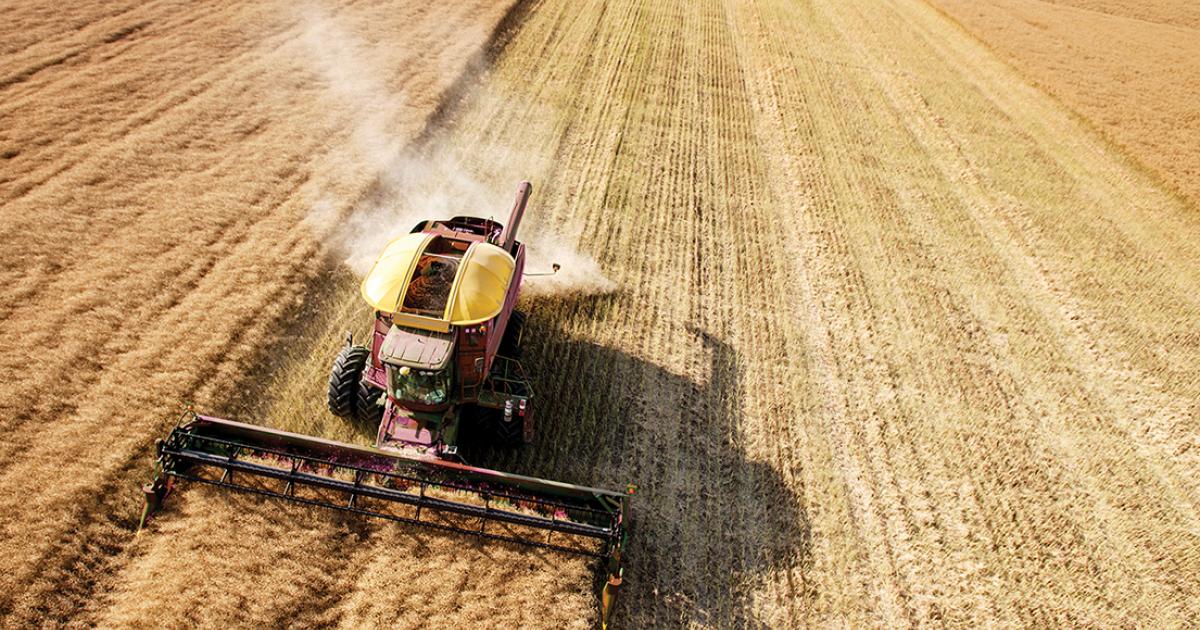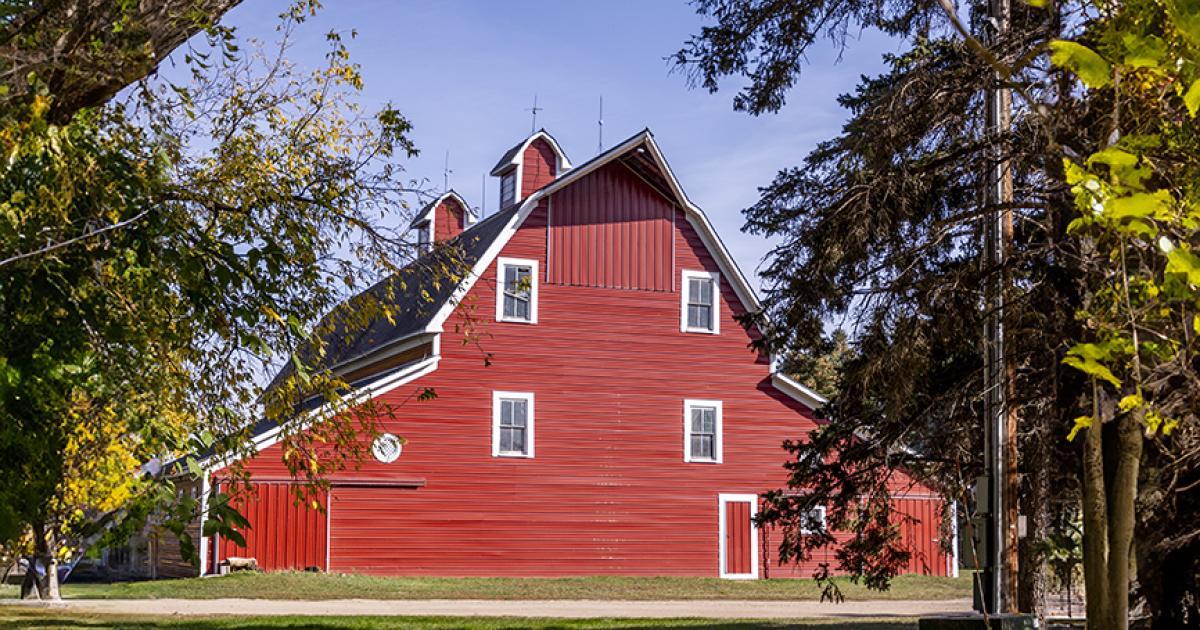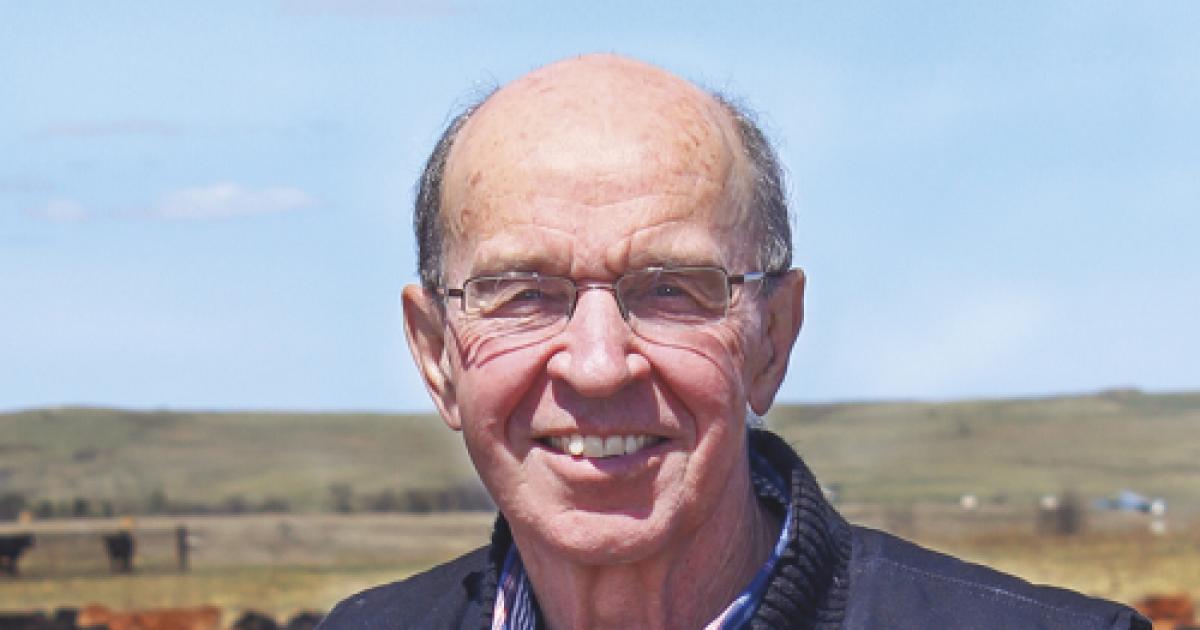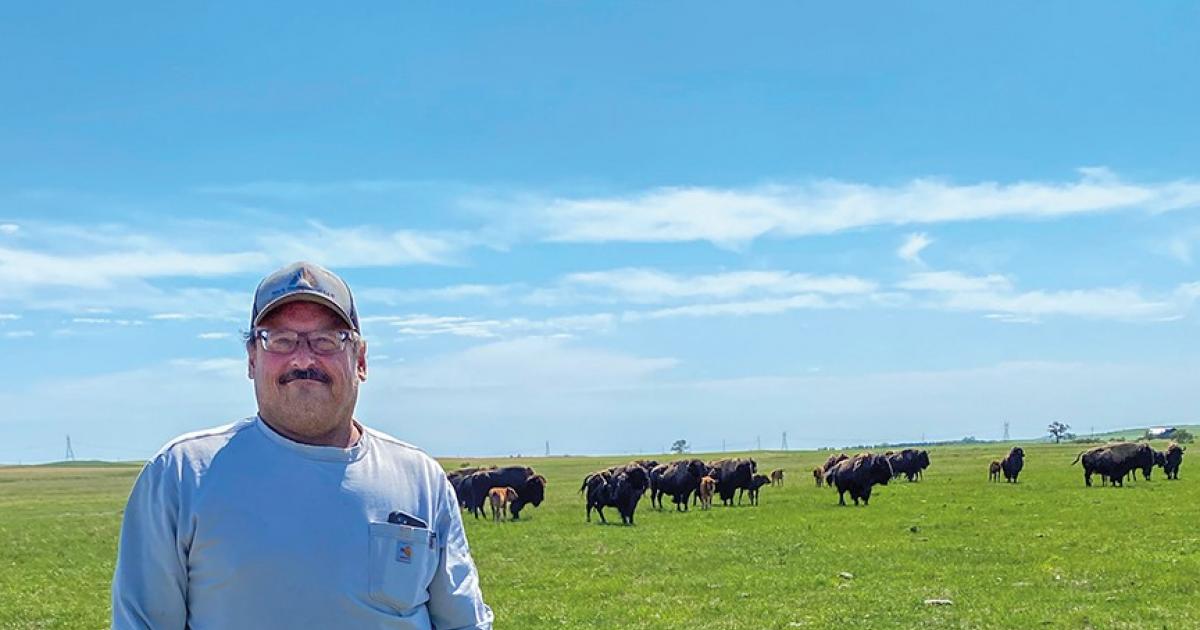Weather and markets
The pressures of farming and ranching don’t disappear when the crops are harvested or the ground freezes for the winter. Even in the beauty of late summer fields or the joy of a million-dollar rain, there are many forces – and stresses – to contend with in agriculture.
In March, many cattlemen and women will calve out their herds, as farmers await the return to their fields. The start of a new season in agriculture brings questions of weather and the markets. Will we get the rain we need? Will there be a market to sell our crops and livestock? Will supply chain issues affect our bottom line?
Frayne Olson, a crops economist/marketing specialist and director of the Quentin Burdick Center for Cooperatives at North Dakota State University (NDSU), and Daryl Ritchison, director of the North Dakota Agricultural Weather Network (NDAWN) at NDSU, share their insights as local experts in ag markets and weather forecasting in this North Dakota Living 2022 agriculture outlook.

Photo by NDAREC/Liza Kessel
WEATHER
“We are going to start 2022 in much better shape than what we did in 2021, in many cases,” Ritchison says. “Last fall was quite wet, with the big exceptions in northwestern North Dakota. Most areas had a fairly wet fall, which really replenished soil moisture.”
That’s sweet music in North Dakota, where most of the state hopes to rebound from several years of dry conditions. Bismarck recorded 2021 as one of the top five warmest years on record, and 2021 made Fargo’s top six warmest recorded years. “Drought” certainly could have been one of the words of the year in 2021.
Ritchison develops his forecasts through long-range data and historical weather information he studies each day.
“Over the last 30 years, we’ve been in a wet cycle, but in the last few years, we’ve been drier again, perhaps signaling the beginning of a drier period of weather,” he says.
Unlike some, Ritchison doesn’t get too excited about “averages,” or yearly rainfall levels being down 4 or 5 inches (still within the standard deviation). But when you stack those years on top of each other, looking at year-over-year data, having five “average” years of rainfall can look dry, especially in agriculture.
“I always say, ‘Average does not grow crops,’” he says.
2022 GROWING SEASON
While this winter’s snowfall may be a plus to ice fishing and snowmobile enthusiasts, it does little in terms of replenishing soil moisture. Most snow will eventually evaporate or runoff this spring, Ritchison says.
In areas of the state that received much-needed rain last fall, however, the 2022 growing season starts on a positive note.
“What soil moisture was on Nov. 30, 2021, will be what soil moisture is on April 1, approximately,” Ritchison says. “That (moisture from a reasonably wet fall) has really frozen in place pretty hard this winter.”
Because most of North Dakota averaged more moisture this winter – before February even started – Ritchison expects the snowpack will result in a slower soil warmup for spring planting.
Ritchison’s current forecast shows most areas starting with good soil moisture early in the growing season and gradually drying off through summer.
“It may be a summer where you say, ‘Come on, rain, we need you,' in July and August,” he says.
Ultimately, Ritchison is forecasting below-average precipitation and above-average temperatures this growing season. Most areas, he believes, won’t be as dry, or as warm, as 2021.
| NORTH DAKOTA AGRICULTURAL WEATHER NETWORK (NDAWN)
The North Dakota Agricultural Weather Network (NDAWN) consists of 168 weather stations across North Dakota and bordering regions in surrounding states. NDAWN was specifically designed to provide weather data required for the development of and operational use of agricultural models. |
In terms of crops, Ritchison believes sugarbeets and corn will fare well, since those root systems can access the deeper moisture in the soil. Small grains will start well, but the question is can they finish in time before the expected dry-off. The adage, “August rains make beans,” holds hope for soybean farmers, if those rains come.
“Overall, I expect it to not be as bad as last year, but still a dry year, and for many people, it will be the third dry year in a row,” Ritchison says.
A self-described “weather geek” from southern Minnesota, Ritchison hasn’t lost his 55-year passion, or fascination, with weather. And while he uses all the tools and data at his disposal, and does his due diligence in his forecasts, he knows his limits.
“This is a forecast. At some point, Mother Nature does what she wants,” he says.
He often pauses to reflect on what the pioneers went through in North Dakota, living and working the land in a “very unique, highly dynamic” weather area. It’s always a moment of awe.
“Living in North Dakota, we don’t get the same weather two days in a row here all that often,” he says.
MARKETS
Despite concerns and further opportunities for disruption in the global ag economy, Olson sees some positive signaling in the market as we enter the start of the 2022 growing season in North Dakota. Strong crop prices top that list.
“Since about the first of the year, we’ve had a pretty nice rally for corn, beans and canola,” Olson says. “We should have very strong crop prices, for old crop in the bin and new crop planted this spring.”

Photo courtesy NDSU
Those prices are indicative of the drought in South America, specifically in Brazil and Argentina, Olson says. Farmers there begin the early soybean harvest in February, and March is their primary soybean harvesting month. Early yields show the soybean harvest isn’t as strong as expected.
On top of lower yields in South America, international buyers have returned to the United States.
“With that combination, we’re seeing prices rebound, and some very high prices, as good, if not better, than what we had last year,” Olson says.
While corn and soybeans are trending positively, wheat has been struggling. Part of the reason for that is the inverse relationship between U.S. corn and wheat in the market. When corn prices are low, the wheat market is less affected. When corn prices are high, however, livestock producers look for other, cheaper feed sources, like wheat. U.S. wheat is used for milling, so to avoid it going to feed livestock, it must be priced higher than other wheat in the market, Olson explains.
“We have to export about 50% of our wheat, but the problem is that there is cheaper wheat internationally in the market, so they don’t buy from the United States,” Olson says. “As corn prices come up, we are pricing ourselves out of the global market for wheat.”
One major world disruption is closely being watched by ag economists everywhere – Russia-Ukraine relations and the potential for war there.
Russia is the largest wheat exporter. Ukraine is the third largest wheat exporter and fourth largest corn exporter.
“The big question is will that disrupt trade flows, and will that cause wheat prices to suddenly increase,” Olson says.
Olson is watching two things – how aggressive the action could or will be and how long it lasts.
“If it flares up and stays for six months or more, then all bets are off,” he says.
AG CONCERNS FOR 2022
As farmers and ranchers begin this season in agriculture, Olson shares his top concerns.
Prices. While prices start the 2022 growing season in a good place, Olson is concerned that prices will drop as summer passes. Current prices include a “risk premium for all of this uncertainty going on in the globe,” and “profit margins could look very different by the time we get to harvest than what it does today,” he warns.
Some producers opt for pre-production contractual arrangements, which offer a guaranteed market price to mitigate some of the uncertainty that exists in the market. While there are certainly pros and cons to this strategy, Olson thinks 2022 is one of the years where these contracts will pay off.
Inflation, high input costs and supply chain. With rising inflation and high input costs, namely for machinery, fertilizer and chemicals, it could be harder for producers to make things work. While still possible to pencil out a strong bottom line in the current ag economy, Olson is concerned these higher prices will last throughout the summer and possibly into 2023.
Agriculture is also not exempt from the supply chain issues facing the global marketplace. The U.S. farmer competes with the farmer in Brazil, China, Russia and India for fertilizer supplies, which is now a global commodity, Olson says. Natural gas is also needed for fertilizer. On top of the rising costs of natural gas, it is caught in the matrix of supply chain issues. And with the difficulty in securing new farm equipment, partly because of disruptions in the manufacturing sectors of other countries, the value of used equipment continues to rise.
Higher interest rates. “As we get inflation in our economy, usually the response is that interest rates go up,” Olson says. The Federal Reserve has announced it will look at rate increases, which will translate into higher interest rates for producers when they borrow money.
Olson says the key will be a slow and gradual interest rate increase, which farmers and ranchers can adjust, rather than a quick jump in interest rates.
A WORLD ECONOMY
In the United States, agriculture, food and related industries contributed $1.109 trillion to the U.S. gross domestic product in 2019, a 5.2% share, according to the U.S. Department of Agriculture Economic Research Service. Of that share, about 0.6%, or $136.1 billion, was direct output by America’s farms.
If you count acres, corn and soybeans are the top crops, with 90 million acres of corn and just under 90 million acres of soybeans. Wheat is the third in terms of acreage, with 46 to 47 million acres of wheat, Olson says. But if you count bushels, corn is king.
“The United States is very blessed to have a lot of productive farmland,” Olson says. “From a food security standpoint, we’ve been self-sufficient for a very long time. So efficient, in fact, we produce way more than we can consume.”
Because of this, the global market has been a godsend for U.S. agriculture. For example, one recent trend that has influenced the market, Olson says, is a shift from a vegetable-based diet to more animal proteins. Which country can supply the additional feed grains to support this shift? The United States.
“There’s good things happening, but there’s definitely some clouds on the horizon that I’m watching,” Olson says.
Cally Peterson is editor of North Dakota Living. She can be reached at cpeterson@ndarec.com.










